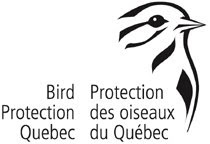Montreal, Mont Royal Cemetery ( 2:30 pm- 6:00 pm):- Very quiet and hardly any activity compared to last week. Best bird was a Great Horned Owl in the small woods between Avenue Mont Royal and Voie Camillien-Houde. Other species seen were Black-capped Chickadee (20), American Goldfinch(4),
Magnolia Warbler(4),American Redstart(1), Yellow-bellied Flycatcher(1), Chipping Sparrow (15), Song Sparrow (2), American Robin(1), Red-breasted Nuthatch(1), Red-eyed Vireo(4), Northern Cardinal (5), Downy Woodpecker(1), Hairy Woodpecker(1), American Crow(20), Common Raven(1),Peregrine Falcon(1), Red-tailed Hawk (1). - Vivek Govind Kumar
--------------------------------------------------------------------
Sebastien Rioux and I were in Cape Torment very early this morning. Between 5:50 and 7:20 an interesting movement of warblers along the axis of river. Stationed at the beginning of the trail, we noted the following quantities:
Tennessee Warbler: 5
Nashville Warbler: 28
Northern Parula: 4
Yellow Warbler: 2
Chestnut-sided Warbler: 1
Magnolia Warbler: 21
Cape May Warbler: 14
Black-throated Blue Warbler: 4
Yellow-rumped Warbler: 175
Black-throated Green Warbler: 9
Blackburnian Warbler: 7
Palm Warbler: 8
Blackpoll Warbler: 4
Black and White Warbler: 1
American Redstart: 9
Ovenbird: 1
Northern Waterthrush: 14 (21 total for the morning)
Common yellowthroat 1
Wilson's Warbler: 6
Canada Warbler: 1
Warbler sp.: 335
Some other species were on a diurnal migration this morning, including Cedar Waxwing (109) and Bobolink (120), American Kestrel (53) and Sharp-shinned Hawk (31).
When the action has receded, we went beginngin of the sentier Le Carouge (trail) where we easily found the beautiful Hooded Warbler. In marais de la Petite Ferme or lac Tourmente (it has more the appearance of a swamp than a Lake at this time), a juvenile Stilt Sandpiper among the many Yellowlegs and Sandpipers (46!).
Leaving the reserve (9:25), stopping at a hawthorn hedge approximately 300m west of the road to the big farm (the one that separates a field of grain from a field of corn). For an unprecedented opportunity, the first
bird in the binoculars Sebastian sees proves to be a Prairie Warbler! She was very cooperative for a few minutes, bobbing tail 2m from us before we lose it for good.
Sébastien Rioux et moi-même étions au cap Tourmente très tôt ce matin. Il s'est produit entre 5h50 et 7h20 principalement un mouvement intéressant de parulines longeant l'axe du fleuve. Postés au début du sentier l'Écart, nous avons noté les quantités suivantes:
Paruline obscure: 5
Paruline à joues grises: 28
Paruline à collier: 4
Paruline jaune: 2
Paruline à flancs marron: 1
Paruline à tête cendrée: 21
Paruline tigrée: 14
Paruline bleue: 4
Paruline à croupion jaune: 175
Paruline à gorge noire: 9
Paruline à gorge orangée: 7
Paruline à couronne rousse: 8
Paruline rayée: 4
Paruline noir et blanc: 1
Paruline flamboyante: 9
Paruline couronnée: 1
Paruline des ruisseaux: 14 (21 total pour le matin)
Paruline masquée: 1
Paruline à calotte noire: 6
Paruline du Canada: 1
Paruline sp.: 335
Quelques autres espèces effectuaient une migration diurne ce matin, dont le Jaseur d'Amérique (109) et le Goglu des prés (120), la Crécerelle d'Amérique (53) et l'Épervier brun (31).
Lorsque l'action s'est estompée, nous nous sommes rendus au début du sentier Le Carouge où nous avons aisément retrouvé la splendide Paruline à capuchon. Dans le marais de la Petite Ferme ou lac Tourmente (il a plus l'apparence d'un marais que d'un lac en ce moment), un Bécasseau à échasses juvénile parmi les nombreux chevaliers et bécassines (46!).
En quittant la réserve (vers 9h25), on s'arrête à la haie d'aubépines environ 300m à l'ouest du chemin menant à la grande ferme (celle qui sépare un champ de céréales d'un champ de maïs). Par une chance inouïe, le premier oiseau qui s'arrête dans les jumelles à Sébastien s'avère être une Paruline des prés! Elle était très coopérative pendant quelques minutes, hochant de la queue à 2m de nous avant qu'on la perde pour de bon. - Olivier Barden
Monday, August 30, 2010
Subscribe to:
Post Comments (Atom)





No comments:
Post a Comment